Union Budget 2015-16

We view this as one of the most progressive budgets w.r.t. Make in India’ & Skill Building
Macro-Economic headwinds
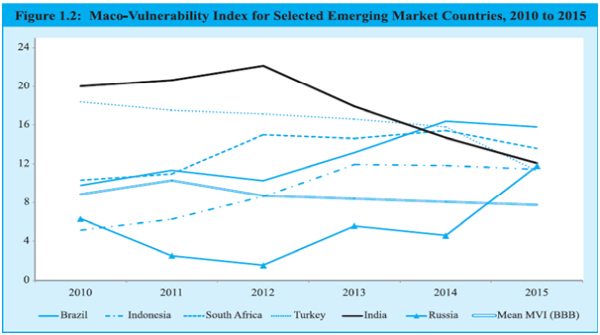
Macro-vulnerability index (MVI) thatcombines a country’s fiscal deficit, current account deficit, and inflation
In 2012, India was the most vulnerable country as measured by its index value of 22.4, comprising an inflation rate of 10.2%, a budget deficit of 7.5% and a current account deficit of 4.7% of GDP. Today, India’s fortunes have improved dramatically. India has reached a sweet spot —rare in the history of nations — in which it could finally be launched on a double-digit medium-term growth trajectory
Macro-economic Indicators (%)
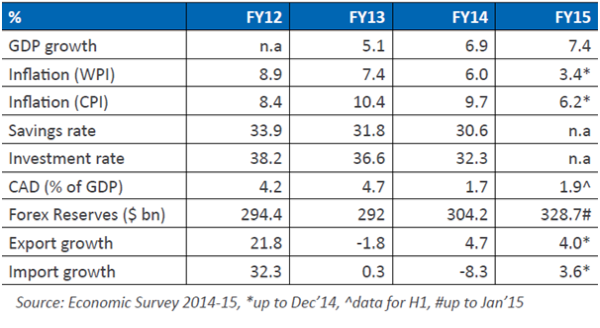
Policy Moves- Many small solutions offered by NaMoversus "big-bang" reforms
1. Improved economic growth during FY14-15 has been contributed by better performance in the manufacturing and services sector.
2. Agriculture and mining continue to be a concern.
3. Fiscal deficit target set @ 3.9% versus Finance Commission’s recommendation of 3.6%. This is subject to meeting Disinvestment targets, which seem unrealistic
4. Cash based transfers based on the ‘JAM’ number trinity: ‘Jan Dhan’ (financial inclusiveness), ‘Aadhar’ (unique
5. identification number), and Mobile to effectively target public resources to those who need it most- India’s poor
6.Capital expenditure will increase from 1.5% of GDP in 2014-15 to 1.7% in 2015-16.
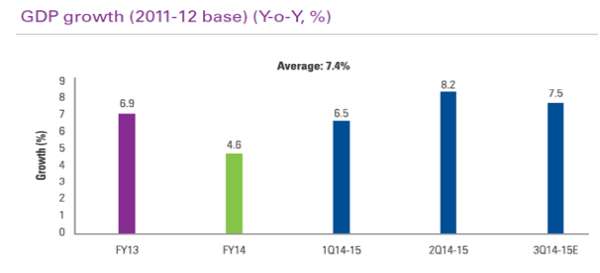
Tax Rates
1. Corporate tax rate to be reduced from 30% to 25% over the period of 4 Years starting from FY 2016-17. will predictably be accompanied by the removal of many incentive provisions.
2. Surcharge @ 7% for income from 1Cr up to 10 Crs and @ 12% for income exceeding 10 Crs.
3. No change in Surcharge rate for Foreign Companies
4. Surcharge rate on income tax payable on distribution of dividends increased from 10% to 12%.
5. Threshold limit for applicability of transfer pricing regulations for domestic transactions increased from 5 cr. to 20 cr .
6. Service Tax rate increased from 12.36% to 14% effective from a date to be notified.
7. Excise duty and service tax rates simplified by removing Education Cess and Secondary and Higher Education Cess
8. The ambit of service tax too has increased by pruning the Negative List and exemptions.
9. Marginal increase in effective customs duty rate to 26.43% (from 25.85%) for capital goods and 29.44 % (from
10. 28.85 %) for other goods, owing to increase in excise duty rate (from 12 % to 12.5 %)
11. All goods, except populated printed circuit boards for use in manufacture of ITA bound items, exempted from SAD
12. Scrapping CVD exemptions will boost ‘make in India’
Disinvestment proceeds (Rs billion) have mostly trailed targets
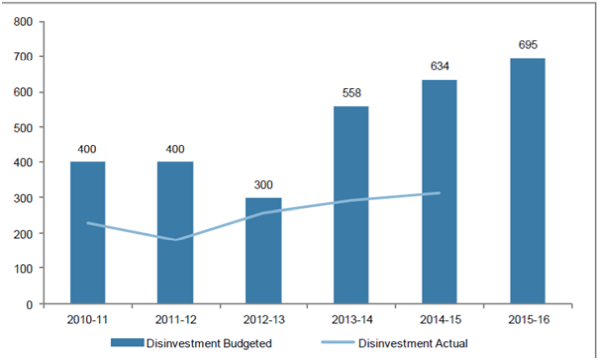
To raise Rs 695 billion, government needs to frontload efforts andcapitalise on the current market buoyancy. If disinvestment proceeds are similar to last year, fiscal deficit would shoot up to 4.2% of GDP
Tax Collections
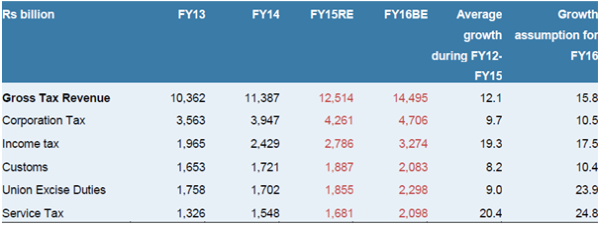
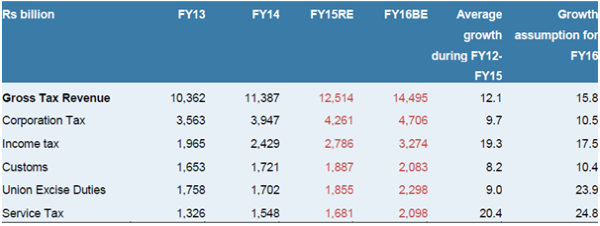
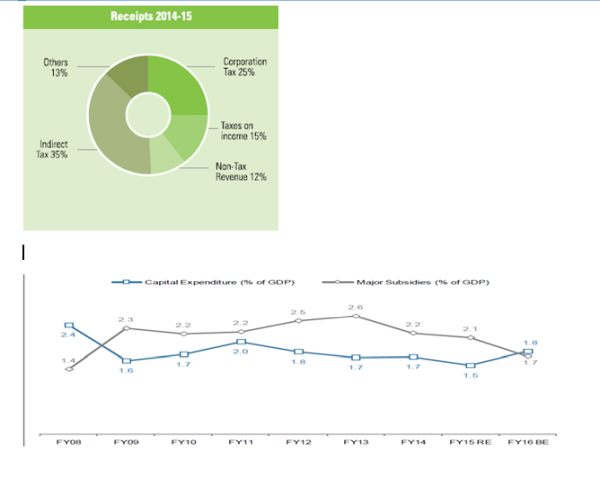
As a % of GDP, capex will exceed subsidies for the first time in 8 years
The Salaried Class- cajobportal.com’s user base
1. No increase in Income-tax basic exemption limit.
2. Increase in Surcharge from 10% to 12%, if the total income exceeds 1 Cr
3. Deductions for Investment in SukanyaSamriddhi Account (SSAS) - within the overall limit of 150,000 p.a.
4. Interest accruing on deposits in SSAS and withdrawals from SSAS to be exempt from tax.
5. Additional deduction of 50,000 per annum to be available in respect of the individual’s contribution to NPS.
6. Deduction for health insurance premium towards member of HUF to be increased from 15,000 p.a. to 25,000 p.a.
7. Enhanced limits for medical treatment of dependent with disability etc
8. Transport allowance exemption increased from 800 per month to 1600 per month.
9. TDS @10% on premature withdrawal of amount of > 30,000 by employee from Recognised Provident Fund
10. Employer required to obtain specified documents from employees, towards expenses/losses claimed, while computing tax deductible at source from salary.
Legislation /Policy Strokes
1. Investments made up to FY 17 exempted from General Anti Avoidance Rule (GAAR)
2. Rationalisation of the capital gains tax regime for sponsors of REITs and pass through status accorded to some AIFs.
3. Direct Tax Code (DTC) scrapped
4. Wealth Tax Act, 1957 (currently applicable for wealth > 30 lacs) abolished- more of a hassle to comply with for many
5. New comprehensive Law to be enacted in the current session to deal with black money stashed abroad
6. New Benami Transaction (Prohibition) Bill to curb domestic black money also to be introduced in the current session.
7. Amendments proposed to FEMA aim to tackle any foreign exchange, foreign security or any immovable property held in contravention and allowing seizure and eventual confiscation of assets of equivalent value situated in India
8. In select sectors, domestic manufacturing has been incentivised by correcting inverted duty structures. There is a thrust on ease of doing business by allowing digitally signed invoices, maintenance of records in electronic form and time bound electronic registration process.
9. GST would arrive on statute books on 1 April – 2016
10. Comprehensive Bankruptcy Code of global standards to be introduced
11. NBFCs with asset size of > INR 500 cr would be considered for notifications as ‘Financial Institution’ in terms of the SARFAESI Act, 2002 enabling them to fund SME and midcorporate businesses.
12. Forwards Markets Commission to be merged with SEBI - regulation of commodity forward markets and reduce speculation
By: Anurag Singal







 CAclubindia
CAclubindia
